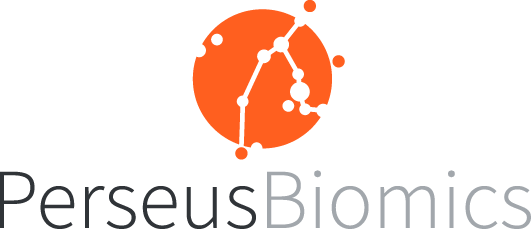Strain-level Identification of Microbes and Why It Is Important
Within the complex world of the microbiome, diversity extends far beyond the conventional taxonomic boundaries of species. Each microbial species further diverge into distinct subgroups, known as strains, each possessing unique genetic and functional characteristics. These subtle variations can profoundly influence the roles these microorganisms play within their ecological niches, shaping their interactions with the host organism and the surrounding environment.
So what is a microbial strain?
Despite the widespread recognition of microbial strains, a universally accepted definition remains elusive. Historically, strains were distinguished based on observable traits, such as growth patterns, metabolic capabilities, or antigenicity. However, with the advent of advanced genomic technologies, the concept has evolved to encompass genetic variations within a species. Strains can be considered as subpopulations within a species that exhibit distinct genotypic or phenotypic traits. These variations may arise from rapid mutations, chromosomal rearrangements, horizontal gene transfer, progressively selected as evolutionary adaptations to specific environmental conditions in the speciation process. Consequently, strains of the same species can exhibit divergent ecological niches, metabolic pathways, and even pathogenicity or probiotic properties.
The significance of strain resolution
While no consensus exists to date on the extent of genetic or phenotypic divergence required to delineate a new strain, several practical reasons underscore the importance of this classification. Unveiling the strain-level diversity within the microbiome holds profound implications for various domains, ranging from healthcare to environmental conservation.
By precisely identifying and characterizing individual strains, researchers can:
Understand ecological niches: different strains may occupy distinct ecological niches, or co-habit same niche but with strain dominating the others under different conditions, responding uniquely to environmental cues due to rapid mutations or horizontal gene transfer events. By unraveling the strain-level diversity within environmental microbial communities, researchers can gain deeper insights into ecosystem dynamics, biogeochemical cycles, and the intricate web of interactions that sustain life on Earth.
Elucidate Functional Roles: Deciphering the functional capabilities of specific strains can shed light on their contributions to host physiology, metabolic processes, and ecosystem dynamics.
Track the transmission of pathogens: Strain-level identification in epidemiology aids in tracing the origin, spread and evolution of pathogens, enabling effective disease control and prevention strategies.
Enhance diagnostic precision: Accurate strain identification is crucial for developing targeted treatment guidelines and tailoring therapeutic interventions for improved patient outcomes.
Optimize Probiotic Applications: Strain-level characterization can guide the selection of most effective probiotic strains, tailoring their applications to specific health benefits or industrial processes.
Overcoming challenges: Advances in strain resolution techniques
Strains of a same species have high similarity and only differ on very narrow range of phenotypes and thus genotypes ; strains of a same species can have a ANI (average nucleotide identity) of up to 99% and still be physiologically different. Given this genetic similarity, achieving precise strain-level resolution has long been a formidable challenge in microbiome research. However, recent technological advancements have paved the way for innovative approaches that are revolutionizing our ability to dissect the intricate tapestry of microbial diversity.
By leveraging high-throughput shotgun metagenomic sequencing (SMS), researchers can now explore the genomic landscapes of complex microbiomes, unveiling the genetic variations that distinguish individual strains. This approach not only enables the identification of known strains but also holds the potential to uncover novel strains that may have eluded traditional cultivation-based methods. By aligning metagenomic data against comprehensive reference databases, researchers can pinpoint strain-specific genetic signatures, such as single nucleotide variations (SNVs) or unique gene clusters, facilitating accurate strain delineation. Sequencing has however significant limitations (see article).
Complementing metagenomic approaches, single-cell genomics techniques have emerged as powerful tools for strain-level resolution. These methods allow researchers to isolate and sequence the genomes of individual microbial cells, providing an unprecedented level of resolution and enabling the exploration of strain-level heterogeneity within complex communities. By circumventing the challenges posed by bulk metagenomic data, single-cell genomics can reveal the genetic diversity within a population, unveiling rare or low-abundance strains that may have been obscured by more dominant community members. This approach has the potential to uncover previously uncharacterized strains, it is however not scalable as a microbiome sample is typically made of billions of cells belonging to thousands of species in most diverse samples.
While genomic approaches provide invaluable insights into the genetic makeup of microbial strains, understanding their functional roles within the microbiome requires a comprehensive analysis of their phenotypic traits. Advanced techniques, such as transcriptomics, proteomics, and metabolomics, have emerged as powerful tools for dissecting the functional diversity of strains at a molecular level.
By examining the gene expression patterns, protein profiles, and metabolic signatures of individual strains, researchers can unravel the intricate interplay between genotype and phenotype. This knowledge can shed light on the unique metabolic pathways, stress responses, and ecological interactions that define the functional roles of specific strains within their respective niches.
To fully harness the power of strain-level resolution, researchers are increasingly adopting integrative approaches that combine genomic and phenotypic data. By bridging the gap between genotype and phenotype, these multi-omics strategies can provide a holistic understanding of microbial strains, elucidating the intricate relationships between their genetic makeup, functional capabilities, and ecological roles. Additionally, machine learning algorithms and artificial intelligence techniques can be leveraged to identify patterns and correlations within vast datasets, facilitating the discovery of novel strain-specific biomarkers and elucidating their functional implications.
Additionally, DynaMAP™ offers a groundbreaking solution for strain-level resolution in microbiome research. Utilizing optical mapping of native single DNA molecules, it identifies strain-specific signatures without amplification or library preparation, thus avoiding biases typical in traditional sequencing (video). This technology delivers high-resolution, unbiased microbiome profiles swiftly and accurately, providing precise and actionable insights into microbial communities (article). By facilitating efficient strain-level identification, DynaMAP™ enhances microbiome science’s accuracy and reproducibility.
The future of strain-level microbiome exploration
As the exploration of the microbiome continues it reveals complex microbial diversity and host-microbe interactions, opening new possibilities for personalized diagnostics, targeted treatments, and disease prevention. Despite challenges in defining strains and integrating diverse data, progress in advanced technologies and integrative methods promises to unravel the complexities of microbial ecosystems. This could transform our understanding of human health, environmental sustainability, and our symbiotic relationship with the microbial world, leading to breakthroughs in probiotic applications and ecosystem dynamics.

